 W
WPete Allen is an English Dixieland jazz clarinettist, alto and soprano saxophonist, bandleader, and vocalist. He has appeared in television and radio shows, both with his band and as a solo act. He has worked with Peanuts Hucko, Bud Freeman, Bob Wilber, Marty Grosz, Billy Butterfield, Barrett Deems, Jack Lesberg, and Kenny Ball.
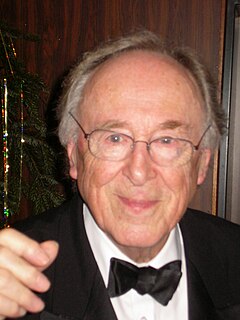 W
WDonald Christopher Barber OBE is an English jazz musician, best known as a bandleader and trombonist. As well as scoring a UK top twenty trad jazz hit, he helped the careers of many musicians, notably the blues singer Ottilie Patterson, who was at one time his wife, and Lonnie Donegan, whose appearances with Barber triggered the skiffle craze of the mid-1950s and who had his first transatlantic hit, "Rock Island Line", while with Chris Barber's band. His providing an audience for Donegan and, later, Alexis Korner makes Barber a significant figure in the British rhythm and blues and "beat boom" of the 1960s.
 W
WWilliam James "Count" Basie was an American jazz pianist, organist, bandleader, and composer. In 1935, Basie formed his own jazz orchestra, the Count Basie Orchestra, and in 1936 took them to Chicago for a long engagement and their first recording. He led the group for almost 50 years, creating innovations like the use of two "split" tenor saxophones, emphasizing the rhythm section, riffing with a big band, using arrangers to broaden their sound, and others. Many musicians came to prominence under his direction, including the tenor saxophonists Lester Young and Herschel Evans, the guitarist Freddie Green, trumpeters Buck Clayton and Harry "Sweets" Edison, plunger trombonist Al Grey, and singers Jimmy Rushing, Helen Humes, Thelma Carpenter, and Joe Williams.
 W
WWalter Bishop Jr. was an American jazz pianist.
 W
WKenneth Clarke Spearman, nicknamed Klook, was an American jazz drummer and bandleader. A major innovator of the bebop style of drumming, he pioneered the use of the Ride cymbal to keep time rather than the hi-hat, along with the use of the bass drum for irregular accents.
 W
WRandolph Denard Ornette Coleman was an American jazz saxophonist, violinist, trumpeter, and composer known as a principal founder of the free jazz genre, a term derived from his 1960 album Free Jazz: A Collective Improvisation.
 W
WKenneth Colyer was an English jazz trumpeter and cornetist, devoted to New Orleans jazz. His band was also known for skiffle interludes.
 W
W'Wild' Bill Davison was an American jazz cornet player. He emerged in the 1920s through his association with Muggsy Spanier and Frank Teschemacher in a cover band where they played the music of Louis Armstrong, but he did not achieve recognition until the 1940s. He is best remembered for his association with bandleader Eddie Condon, with whom he worked and recorded from the mid-1940s through the 1960s. Born William Edward Davison, his nickname "Wild Bill" reflected a reputation for heavy drinking and womanizing.
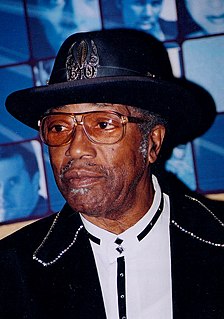 W
WEllas McDaniel, known as Bo Diddley, was an American singer, guitarist, songwriter and music producer who played a key role in the transition from the blues to rock and roll. He influenced many artists, including Buddy Holly, Elvis Presley, the Beatles, the Rolling Stones, the Animals, and the Clash.
 W
WEdward Kennedy "Duke" Ellington was an American composer, pianist, and leader of a jazz orchestra, which he led from 1923 until his death over a career spanning more than six decades.
 W
WPaul Gonsalves was an American jazz tenor saxophonist best known for his association with Duke Ellington. At the 1956 Newport Jazz Festival, Gonsalves played a 27-chorus solo in the middle of Ellington's "Diminuendo and Crescendo in Blue," a performance credited with revitalizing Ellington's waning career in the 1950s.
 W
WDexter Gordon was an American jazz tenor saxophonist. He was among the most influential early bebop musicians, which included other greats such as Charlie Parker, Dizzy Gillespie, and Bud Powell. Gordon's height was 6 feet 6 inches (198 cm), so he was also known as "Long Tall Dexter" and "Sophisticated Giant". His studio and performance career spanned over 40 years.
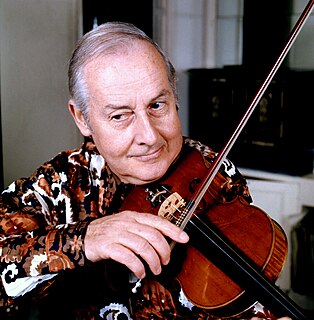 W
WStéphane Grappelli, born Stefano Grappelli, was a French-Italian jazz violinist who founded the Quintette du Hot Club de France with guitarist Django Reinhardt in 1934. It was one of the first all-string jazz bands. He has been called "the grandfather of jazz violinists" and continued playing concerts around the world well into his eighties.
 W
WJohn Arnold Griffin III was an American jazz tenor saxophonist. Nicknamed "the Little Giant" for his short stature and forceful playing, Griffin's career began in the early 1940s and continued until the month of his death. At eighty, he felt no need to stop. He did not complain. He had a hard life, but often said, “as long as God has given me the gift to blow, I owe it to God to keep on blowing.” A pioneering figure in hard bop, Griffin recorded prolifically as a bandleader in addition to stints with pianist Thelonious Monk, drummer Art Blakey, in partnership with fellow tenor Eddie "Lockjaw" Davis and as a member of the Kenny Clarke/Francy Boland Big Band after he moved to Europe in the 1960s. In 1995, Griffin was awarded an Honorary Doctorate of Music from Berklee College of Music.
 W
WRoland Pembroke Hanna was an American jazz pianist, composer, and teacher.
 W
WHampton Barnett Hawes, Jr. was an American jazz pianist. He was the author of the memoir Raise Up Off Me, which won the Deems-Taylor Award for music writing in 1975.
 W
WColeman Randolph Hawkins, nicknamed "Hawk" and sometimes "Bean", was an American jazz tenor saxophonist. One of the first prominent jazz musicians on his instrument, as Joachim E. Berendt explained: "there were some tenor players before him, but the instrument was not an acknowledged jazz horn". Hawkins biographer John Chilton described the prevalent styles of tenor saxophone solos prior to Hawkins as "mooing" and "rubbery belches." Hawkins cited as influences Happy Caldwell, Stump Evans, and Prince Robinson, although he was the first to tailor his method of improvisation to the saxophone rather than imitate the techniques of the clarinet. Hawkins' virtuosic, arpeggiated approach to improvisation, with his characteristic rich, emotional, loud, and vibrato-laden tonal style, was the main influence on a generation of tenor players that included Chu Berry, Charlie Barnet, Tex Beneke, Ben Webster, Vido Musso, Herschel Evans, Buddy Tate, and Don Byas, and through them the later tenormen, Arnett Cobb, Illinois Jacquet, Flip Phillips, Ike Quebec, Al Sears, Paul Gonsalves, and Lucky Thompson. While Hawkins became well known with swing music during the big band era, he had a role in the development of bebop in the 1940s.
 W
WEarl Kenneth Hines, also known as Earl "Fatha" Hines, was an American jazz pianist and bandleader. He was one of the most influential figures in the development of jazz piano and, according to one source, "one of a small number of pianists whose playing shaped the history of jazz".
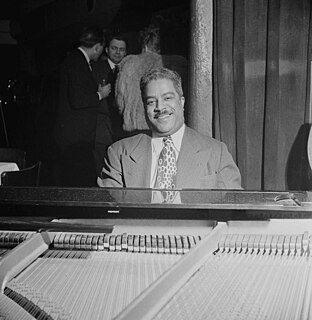 W
WClifton Luther Jackson was an American stride pianist.
 W
WJean-Baptiste "Illinois" Jacquet was an American jazz tenor saxophonist, best remembered for his solo on "Flying Home", critically recognized as the first R&B saxophone solo.
 W
WJoseph Rudolph "Philly Joe" Jones was an American jazz drummer, known as the drummer for the first "Great" Miles Davis Quintet. He should not be confused with "Papa" Jo Jones, another drummer who had a long tenure with Count Basie. The two men died only a few days apart.
 W
WBarney Kessel was an American jazz guitarist born in Muskogee, Oklahoma. Noted in particular for his knowledge of chords and inversions and chord-based melodies, he was a member of many prominent jazz groups as well as a "first call" guitarist for studio, film, and television recording sessions. Kessel was a member of the group of session musicians informally known as the Wrecking Crew.
 W
WSteve Lacy, born Steven Norman Lackritz in New York City, was an American jazz saxophonist and composer recognized as one of the important players of soprano saxophone. Coming to prominence in the 1950s as a progressive dixieland musician, Lacy went on to a long and prolific career. He worked extensively in experimental jazz and to a lesser extent in free improvisation, but Lacy's music was typically melodic and tightly-structured. Lacy also became a highly distinctive composer, with compositions often built out of little more than a single questioning phrase, repeated several times.
 W
WGuy Lafitte was a French jazz saxophonist.
 W
WDame Cleo Laine is an English jazz and pop singer and an actress, known for her scat singing and for her vocal range. Though her natural range is that of a contralto, she is able to produce a G above high C, giving her an overall compass of well over three octaves. Laine is the only female performer to have received Grammy nominations in the jazz, popular and classical music categories. She is the widow of jazz composer and musician Sir John Dankworth.
 W
WMelvin Sokoloff, known professionally as Mel Lewis, was an American jazz drummer, session musician, professor, and author. He received fourteen Grammy Award nominations.
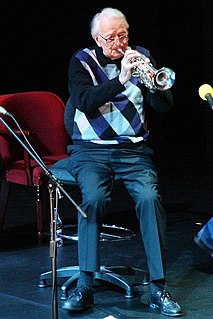 W
WHumphrey Richard Adeane Lyttelton, also known as Humph, was an English jazz musician and broadcaster from the aristocratic Lyttelton family.
 W
WFred McDowell, known by his stage name Mississippi Fred McDowell, was an American hill country blues singer and guitar player.
 W
WCarmen Mercedes McRae was an American jazz singer. She is considered one of the most influential jazz vocalists of the 20th century and is remembered for her behind-the-beat phrasing and ironic interpretation of lyrics. McRae was inspired by Billie Holiday, but she established her own voice. She recorded over sixty albums and performed worldwide.
 W
WJames Columbus "Jay" McShann was a jazz pianist and bandleader. He led bands in Kansas City, Missouri, that included Charlie Parker, Bernard Anderson, Ben Webster, and Walter Brown.
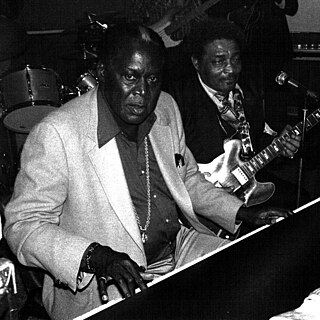 W
WMemphis Slim was an American blues pianist, singer, and composer. He led a series of bands that, reflecting the popular appeal of jump blues, included saxophones, bass, drums, and piano. A song he first cut in 1947, "Every Day I Have the Blues", has become a blues standard, recorded by many other artists. He made over 500 recordings.
 W
WThelonious Sphere Monk was an American jazz pianist and composer. He had a unique improvisational style and made numerous contributions to the standard jazz repertoire, including "'Round Midnight", "Blue Monk", "Straight, No Chaser", "Ruby, My Dear", "In Walked Bud", and "Well, You Needn't". Monk is the second-most-recorded jazz composer after Duke Ellington.
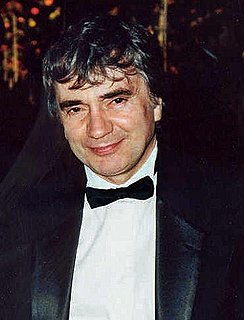 W
WDudley Stuart John Moore, CBE was an English actor, comedian, musician, and composer. Moore first came to prominence in the UK as a leading figure in the British satire boom of the 1960s. He was one of the four writer-performers in the comedy revue Beyond the Fringe from 1960 that created a boom in satiric comedy, and with one member of that team, Peter Cook, collaborated on the BBC television series Not Only... But Also. The double act worked on other projects until the mid-1970s, by which time Moore had settled in Los Angeles to concentrate on his film acting.
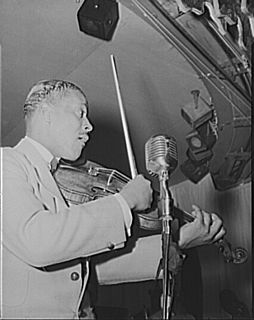 W
WRay Willis Nance was a jazz trumpeter, violinist and singer. He is best remembered for his long association with Duke Ellington and his orchestra.
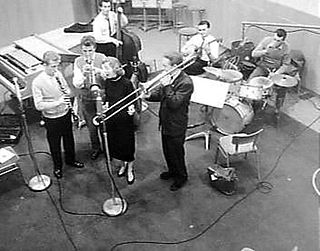 W
WAnna Ottilie Patterson was a Northern Irish blues singer best known for her performances and recordings with the Chris Barber Jazz Band in the late 1950s and early 1960s.
 W
WOscar Pettiford was an American jazz double bassist, cellist and composer. He was one of the earliest musicians to work in the bebop idiom.
 W
WWillie Lee Perryman, usually known professionally as Piano Red and later in life as Dr. Feelgood, was an American blues musician, the first to hit the pop music charts. He was a self-taught pianist who played in the barrelhouse blues style. His performing and recording careers emerged during the period of transition from completely segregated "race music" to rhythm and blues, which was marketed to both white and black audiences. Some music historians credit Perryman's 1950 recording "Rocking With Red" for the popularization of the term rock and roll in Atlanta. His simple, hard-pounding left hand and his percussive right hand, coupled with his cheerful shout, brought him considerable success over three decades.
 W
WEarl Rudolph "Bud" Powell was an American jazz pianist and composer. Along with Charlie Parker, Thelonious Monk, and Dizzy Gillespie, Powell was a leading figure in the development of bebop. His virtuosity led many to call him the Charlie Parker of the piano. Powell was also a composer, and many jazz critics credit his works and his playing as having "greatly extended the range of jazz harmony."
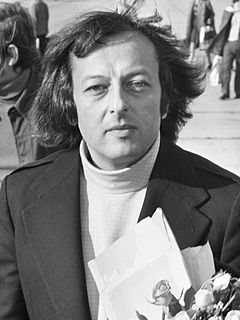 W
WAndré George Previn was a German-American pianist, composer, and conductor. His career had three prongs: Hollywood, jazz, and classical music. On each he achieved success, and the latter two were part of his life until the end. In the movies, he arranged music and composed. In jazz he was a celebrated trio pianist, a piano-accompanist to singers of standards, and pianist-interpreter of songs from the “Great American Songbook.” In classical music he worked as a pianist too but gained television renown as a conductor, and during his last thirty years created his legacy: as a composer of art music.
 W
WBernard "Buddy" Rich was an American jazz drummer and bandleader. He is considered one of the most influential drummers of all time.
 W
WRoswell Hopkins Rudd Jr. was an American jazz trombonist and composer.
 W
WRaymond 'Ray' Russell is an English session musician who is primarily a guitarist. He is also renowned as a record producer and composer.
 W
WCharles James Shavers was an American swing era jazz trumpeter who played with Dizzy Gillespie, Nat King Cole, Roy Eldridge, Johnny Dodds, Jimmie Noone, Sidney Bechet, Midge Williams, Tommy Dorsey, and Billie Holiday. He was an arranger and composer, and one of his compositions, "Undecided", is a jazz standard.
 W
WEdward Hammond Boatner Jr., known professionally as Sonny Stitt, was an American jazz saxophonist of the bebop/hard bop idiom. Known for his warm tone, he was one of the best-documented saxophonists of his generation, recording more than 100 albums. He was nicknamed the "Lone Wolf" by jazz critic Dan Morgenstern because of his relentless touring and devotion to jazz. Stitt was sometimes viewed as a Charlie Parker mimic, especially earlier in his career, but gradually came to develop his own sound and style, particularly when performing on tenor saxophone.
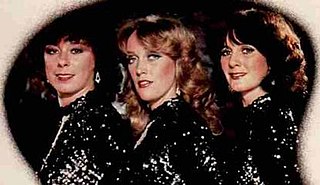 W
WSweet Substitute is an English all girl trio, specializing in jazz and swing harmony recordings, including a cappella. They originated from Bristol, England.
 W
WArthur Tatum Jr. was an American jazz pianist who is widely regarded as one of the greatest in his field.
 W
WCecil Percival Taylor was an American pianist and poet.
 W
WCharles Tolliver is an American jazz trumpeter, composer, and co-founder of Strata East Records.
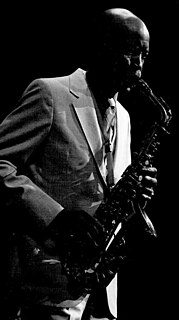 W
WEddie "Cleanhead" Vinson was an American jump blues, jazz, bebop and R&B alto saxophonist and blues shouter. He was nicknamed Cleanhead after an incident in which his hair was accidentally destroyed by lye contained in a hair straightening product. Music critic Robert Christgau has called Vinson "one of the cleanest—and nastiest—blues voices you'll ever hear."
 W
WMalcolm Earl "Mal" Waldron was an American jazz pianist, composer, and arranger. He started playing professionally in New York in 1950, after graduating from college. In the following dozen years or so Waldron led his own bands and played for those led by Charles Mingus, Jackie McLean, John Coltrane, and Eric Dolphy, among others. During Waldron's period as house pianist for Prestige Records in the late 1950s, he appeared on dozens of albums and composed for many of them, including writing his most famous song, "Soul Eyes", for Coltrane. Waldron was often an accompanist for vocalists, and was Billie Holiday's regular accompanist from April 1957 until her death in July 1959.
 W
WBenjamin Francis Webster was an American jazz tenor saxophonist.
 W
WTheodore Shaw Wilson was an American jazz pianist. Described by critic Scott Yanow as "the definitive swing pianist", Wilson's sophisticated and elegant style was featured on the records of many of the biggest names in jazz, including Louis Armstrong, Lena Horne, Benny Goodman, Billie Holiday, and Ella Fitzgerald. With Goodman, he was one of the first black musicians to appear prominently with white musicians. In addition to his extensive work as a sideman, Wilson also led his own groups and recording sessions from the late 1920s to the 1980s.